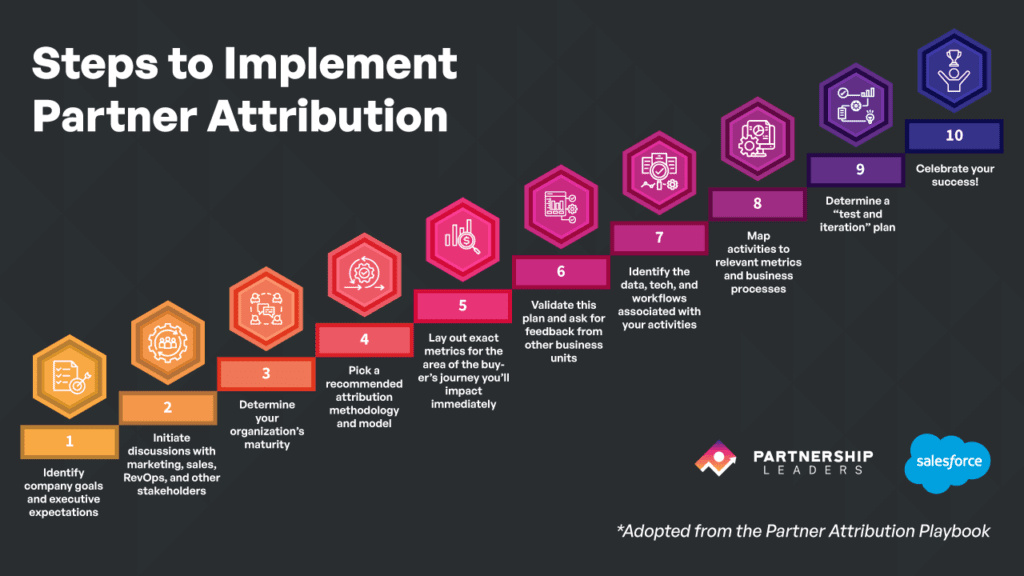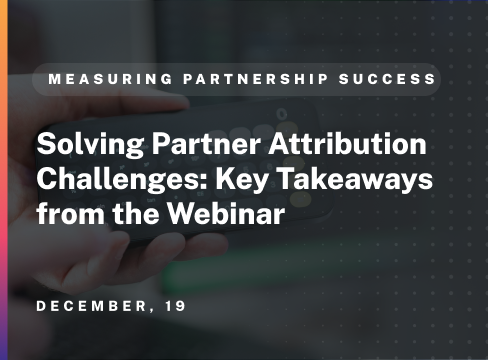Partner attribution is one of the most critical yet complex challenges you face as a partnership professional. Without a clear way to track and prove partner impact, it’s tough to secure leadership buy-in, align with RevOps, or ensure your partner ecosystem and team gets the recognition it deserves.
In our recent webinar, the chat section buzzed with insights from experts in the partnerships space, adding rich perspectives and practical examples to the main discussion.

For a deeper, structured guide to implementing the right attribution strategy for your team, download the Partner Attribution Playbook. This resource provides in-depth insights and practical advice to help you simplify attribution, align stakeholders, and showcase your team’s impact to the company. Download for free today!
Here are our favorite highlights from the session.
Common Challenges in Partner Attribution
For many teams, technological complexity and siloed reporting are the biggest roadblocks. Integrating data across platforms, managing evolving touchpoints, and balancing partner-sourced versus influenced revenue can quickly turn into a messy process. These issues often arise when partner attribution is siloed instead of integrated into the broader partner ecosystem.
“The audit on influenced attribution is the hardest… Otherwise, we quickly see influenced numbers being questioned by sales leadership.” – Nisha Koshy
Another recurring issue is aligning attribution efforts with RevOps and executive priorities. Without a unified model, teams can end up in a battle for credit.
“Partner teams can execute well, but when it comes time to prove it, CROs and CFOs can’t see the full picture. The missing link is partner teams connecting into RevOps to meet them where they are.” – Will Taylor
Finally, cultural and operational misalignment can stall progress. When sales teams hesitate to attribute opportunities to partners, it slows momentum.
“How do we get sales reps internally to attribute their opps to partners? They seem very reluctant, even though it doesn’t take anything away from them.” – Maurice Quek
These challenges show why getting partner attribution right is so important—and why a clear, trusted strategy is the only way forward.
Solutions and Approaches to Master Attribution
While the challenges are real, the webinar made one thing clear: solving partner attribution starts with practical, scalable solutions. The key is balancing automation, alignment, and simplicity.
One approach that stood out was automating attribution wherever possible to reduce manual processes.
“Automate as much as possible. When a partner lead is submitted and accepted as sourced, the attribution should automatically flow over to the opportunity so the onus is not on the rep to manually add it.” – Rachel Grosh
Aligning with RevOps and adopting a unified attribution model is another critical step. By ensuring partner data integrates seamlessly into systems like Salesforce, you can improve visibility and trust across your partner ecosystem.
“We automate leads from partners into Salesforce, tagged them to the correct account manager, and tied a percentage of the referral fee to SPIFFs. Sales reps became far more interested in tracking partner attribution.” – Michael Arguin
Getting executive buy-in is also crucial. Teams that succeed focus on clear ROI and tangible outcomes, like tying partner influence to revenue growth.
“Exec buy-in is key, but sometimes you need to build momentum from the ground up. We need to be constant partner evangelists both internally and externally.” – Lindsay Riggs
From streamlining systems to aligning teams and driving accountability, the right strategies can turn partner attribution from a pain point into a measurable success driver.
Other Expert Insights We Loved
The conversation highlighted that mastering partner attribution isn’t just about tools—it’s about mindset, collaboration, and consistency. Leaders shared actionable strategies to drive results within the partner ecosystem, emphasizing alignment, education, and trust.
One key insight came from aligning incentives across teams. Michael Arguin shared how introducing referral fees motivated sales teams to prioritize attribution:
“We converted all partner agreements to default bi-lateral referrals and tied a percentage of the referral fee to SPIFFs. Suddenly, sales reps were far more engaged in tracking partner influence.” – Michael Arguin
Addressing cultural misalignment—like hesitation from sales teams to attribute deals—requires both education and process.
“This is where a portal comes into play. Partners register leads, sales vets for incrementality, and opportunities are tagged as partner sourced. Attribution is baked into the process.” – Ty Lingley
These insights highlight a recurring lesson: partner attribution thrives when alignment, incentives, and processes are built with trust and visibility at the core.
Conclusion
Getting partner attribution right is no small feat, but the strategies shared in this webinar prove it’s possible. Use these insights to showcase the full impact of your partner ecosystem—and secure the resources and recognition your team deserves.
Getting partner attribution right is no small feat, but the strategies shared in this webinar prove it’s possible. Use these insights to showcase the full impact of your partnerships—and secure the resources and recognition your team deserves.
Ready to take your attribution strategy to the next level? Download the Partner Attribution Playbook for actionable insights, tools, and proven methodologies to optimize your partner ecosystem.


